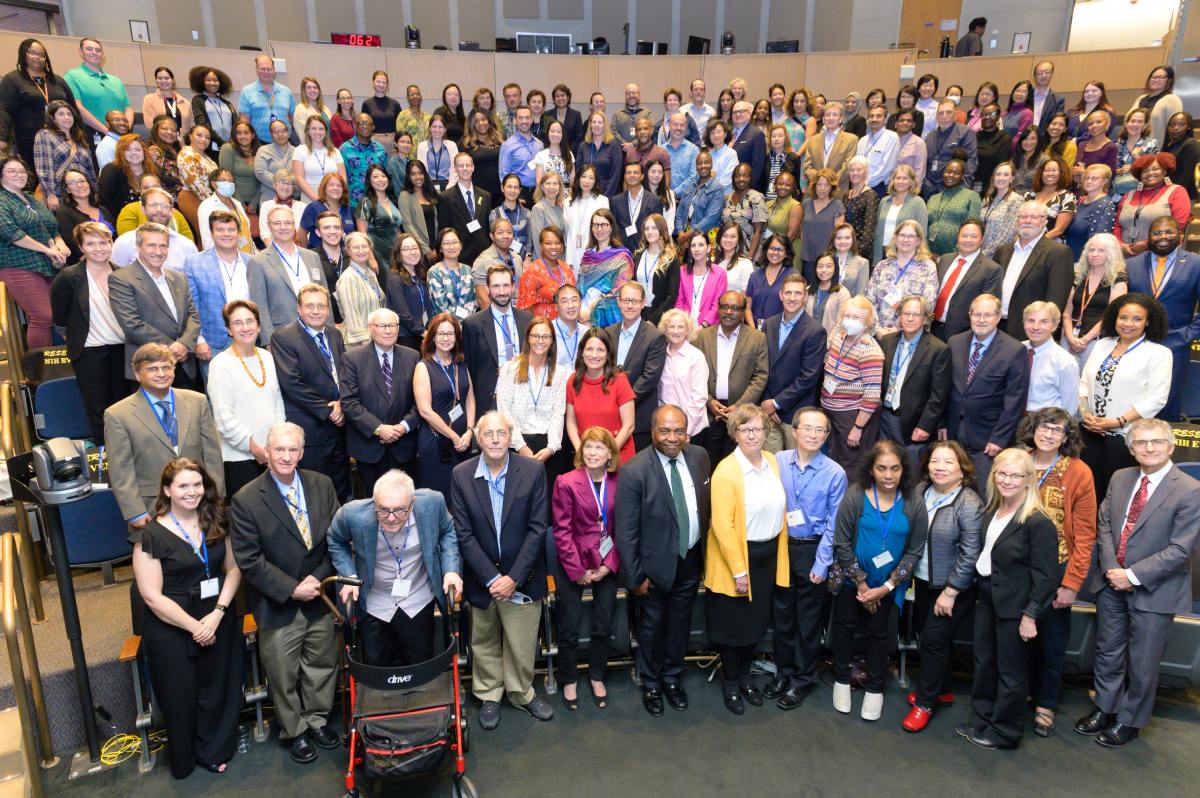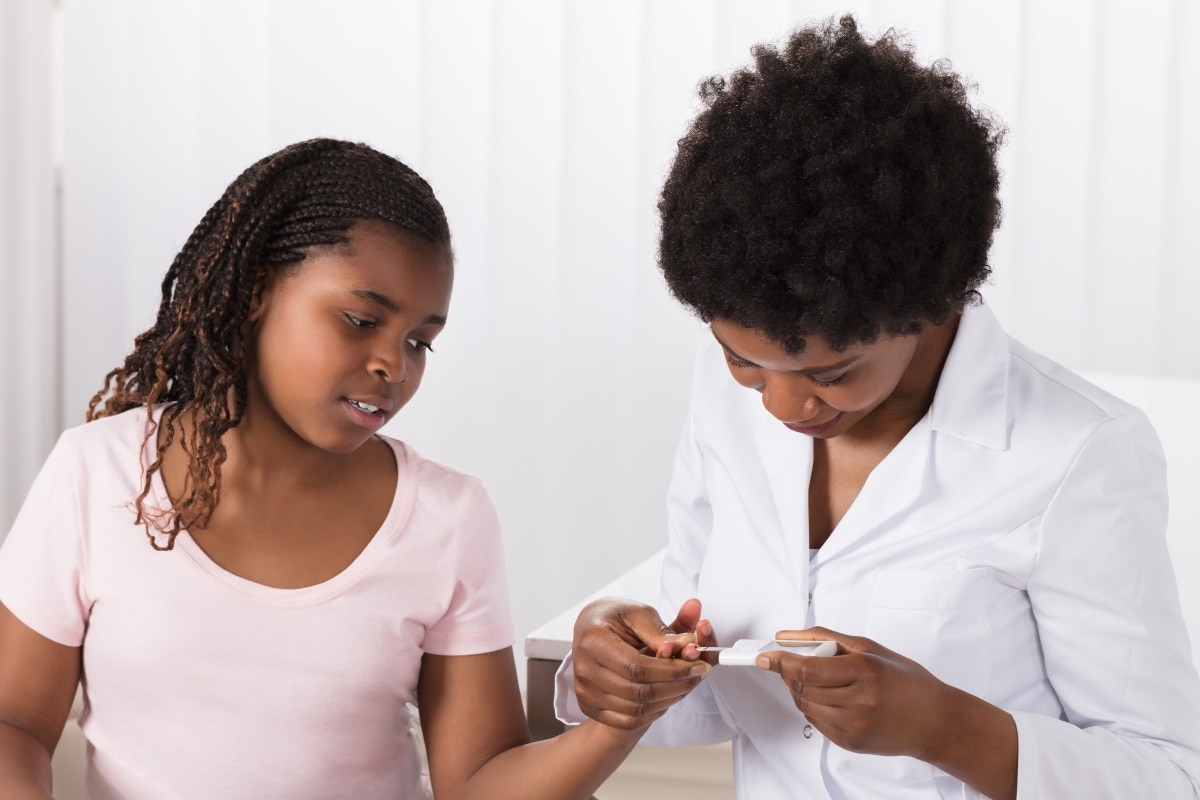News Around NIDDK
Celebrating 75 years of NIDDK: Award-winning extramural research
Over the past seven and a half decades, NIDDK-funded research has revolutionized prevention of and treatment for diseases across the Institute’s mission. From the development of long-acting insulin to anti-obesity medications, NIDDK has been behind some of the most important biomedical breakthroughs through funding and supporting science at outside institutions, also known as extramural research.
Extramural research is designed to harness the creativity and expertise of researchers at universities, small businesses, and other research institutions throughout the United States. NIDDK empowers scientists to explore fundamental questions and address critical challenges in health. This decentralized approach cultivates a breadth of ideas, methodologies, and geographic regions, leading to a robust pipeline of innovations that drive progress.
One hallmark of NIDDK’s extramural program is its focus on long-term, high-risk, high-reward projects. This investment has paid off in numerous ways, yielding discoveries that have improved the lives of millions of people worldwide. As NIDDK commemorates its 75th anniversary, it also celebrates the remarkable achievements of its extramural researchers. Throughout the years, nearly 40 NIDDK and NIDDK-funded researchers have won prestigious awards, including the Nobel Prize and Lasker Awards.
In 2024, the Lasker-DeBakey Clinical Medical Research Award honored three researchers for the discovery and development of GLP-1 based drugs: Dr. Joel Habener of Massachusetts General Hospital; Dr. Svetlana Mojsov of The Rockefeller University; and Dr. Lotte Bjerre Knudsen of Novo Nordisk. NIH, primarily NIDDK, has supported Habener’s work for nearly 40 years, and Mosjov received NIH funding, including from NIDDK, beginning in the 1980s. The NIH-funded work of Habener and Mosjov in the 1980s to better understand and characterize key hormones that control blood glucose levels began a decades-long journey of discovery that ultimately led to the Food and Drug Administration’s approval of GLP-1-based treatments, which are now improving the health and quality of life of millions of people with diabetes and obesity. They have also been shown to help with cardiovascular disease, kidney disease, metabolic dysfunction-associated steatohepatitis, and more.
Habener’s and Mojsov’s accomplishments underscore the value of NIH’s investments in basic and translational research – and demonstrate how discoveries made in the lab, over years of trial and dedication, can translate into transformative treatments.
NIDDK grant recipients have also made groundbreaking advances recognized by the esteemed Nobel Prize. These discoveries, highlighted in the examples below, demonstrate the vast reach of NIDDK’s investments in rigorous science.
- Dickinson W. Richards Jr. shared the 1956 Nobel Prize in Physiology or Medicine with two other scientists for developing heart catheterization techniques to study and diagnose circulatory disorders.
- John Kendrew shared the 1962 Nobel Prize in Chemistry for discovering the molecular structure of myoglobin, a form of the blood protein hemoglobin found in muscle.
- Earl W. Sutherland Jr. won the 1971 Nobel Prize in Physiology or Medicine for his findings on the mechanisms of hormone action, that greatly advanced the field of endocrinology.
- Herbert A. Hauptman shared the 1985 Nobel Prize in Chemistry for creating methods to determine crystal structures, which advanced the development of practical instruments for learning the three-dimensional shape of molecules.
- E. Donnall Thomas shared the 1990 Nobel Prize in Physiology or Medicine with another NIH grant recipient for pioneering transplant therapy.
- Irwin A. Rose and Avram Hershko shared the 2004 Nobel Prize in Chemistry with another scientist for discovering ubiquitin-mediated protein degradation inside the cell.
- Gregg L. Semenza shared the 2019 Nobel Prize in Physiology or Medicine with NIH grant recipient Dr. William G. Kaelin Jr. and another scientist for their discoveries of how cells sense and adapt to oxygen availability.
The award-winning achievements associated with NIDDK-funded projects serve as powerful reminders of how the extramural research program has improved health and forged new paths in medical discovery. Its enduring legacy of excellence and impact offers promise for breakthroughs to come.
Editor’s note: the 75th anniversary webpage will be updated throughout the year with additional information and events. Check back for the latest news.
NIDDK employees honored at annual awards ceremony

The NIDDK Employee Appreciation Awards Ceremony took place October 7, 2024. The ceremony celebrated NIDDK employees’ scientific, clinical, and administrative achievements in the past year.
NIH competition aims to find innovative solutions to problems faced by people with kidney diseases
Detecting kidney injury early can change lives – by helping prevent permanent damage and improving patient care. A team of students from Clemson University developed an innovative device to identify early signs of kidney injury, with support from NIDDK.
 The NephroGuard team including (from left): Calvin Chernyatinskiy, Alexander Bowie, Aaron Spearman, Omar Aguilar and Nicholas Stiebler. Credit: Clemson University
The NephroGuard team including (from left): Calvin Chernyatinskiy, Alexander Bowie, Aaron Spearman, Omar Aguilar and Nicholas Stiebler. Credit: Clemson University
The team participated in and won the $15,000 NIDDK Kidney Technology Development Prize through the Design by Biomedical Undergraduate Teams (DEBUT) Challenge, led by the NIH’s National Institute of Biomedical Imaging and Bioengineering and the higher education non-profit VentureWell. Sponsored by six other NIH partners including NIDDK in 2024, the challenge encourages undergraduate students to identify healthcare problems and develop technological solutions, which supports innovation and entrepreneurship training for students at a critical stage early in their careers.
The team’s design, known as NephroGuard, is a real-time diagnostic device to quickly detect acute kidney injury in patients following cardiac surgery. The device uses an electrochemical sensor to detect a biomarker that has been shown to detect kidney injury within hours, rather than the days it can normally take using traditional methods.
“We recognize that new approaches to help people living with kidney diseases may come from researchers with unique skills and perspective, outside of traditional nephrology,” explained Dr. Daniel Gossett, in the NIDDK Division of Kidney, Urologic, & Hematologic Diseases. “Creating a Kidney Technology Development Prize through DEBUT was a unique opportunity to bring together innovative thinkers from other disciplines to help people with kidney diseases, their families, nephrologists, and other care providers.”
The students graduated from Clemson in 2024 with degrees in bioengineering and are continuing to work on the NephroGuard, with the hope of saving lives and improving kidney health.
NIDDK launches study to tackle type 2 diabetes in children and adolescents
 An NIDDK-supported, multi-site study launched in October to address the dramatic rise in youth-onset type 2 diabetes (Y-T2D) over the past two decades. The observational study, called Discovery of Risk Factors for Type 2 Diabetes in Youth, aims to advance understanding of the biologic, social, and environmental drivers of Y-T2D to determine which children are at highest risk and how to better screen for the disease. This information could then be used to better prevent and manage the disease. The study also aims to understand why Y-T2D is more challenging to treat and progresses more aggressively compared to adult-onset T2D. Study sites across the country will recruit 3,600 participants ages 9-14 who are considered at risk for developing T2D. The research team is also seeking extensive input from youth, young adults, and parents with lived experience of type 2 diabetes on both study design and conduct.
An NIDDK-supported, multi-site study launched in October to address the dramatic rise in youth-onset type 2 diabetes (Y-T2D) over the past two decades. The observational study, called Discovery of Risk Factors for Type 2 Diabetes in Youth, aims to advance understanding of the biologic, social, and environmental drivers of Y-T2D to determine which children are at highest risk and how to better screen for the disease. This information could then be used to better prevent and manage the disease. The study also aims to understand why Y-T2D is more challenging to treat and progresses more aggressively compared to adult-onset T2D. Study sites across the country will recruit 3,600 participants ages 9-14 who are considered at risk for developing T2D. The research team is also seeking extensive input from youth, young adults, and parents with lived experience of type 2 diabetes on both study design and conduct.
NIDDK annual report published
 The NIDDK annual report for 2025, NIDDK Recent Advances & Emerging Opportunities, is now available. This 25th edition highlights examples of NIDDK-funded research advances from fiscal year 2024.
The NIDDK annual report for 2025, NIDDK Recent Advances & Emerging Opportunities, is now available. This 25th edition highlights examples of NIDDK-funded research advances from fiscal year 2024.
NIDDK’s Office of Scientific Program and Policy Analysis leads the production of this report with input from the Institute’s extramural divisions and offices and the Division of Intramural Research.

